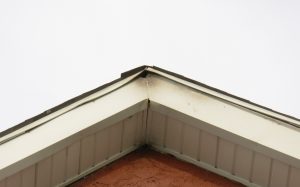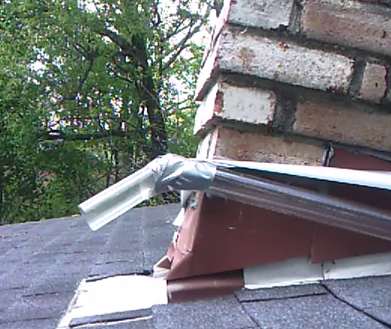Get Your Housed Bat-Proofed
Unlike squirrels and raccoons, bats don’t force their way into our homes.
They get in through small openings that come to exist on our homes through age, damage, design, or poor workmanship. Or, more than likely, a combination of these factors.
The small stature of Ohio’s bats is one of their biggest assets when it comes to finding shelter.
Little openings that don’t look like much to the untrained eye often lead to nooks and crannies (or big attics) that have climates bats thrive in. If they find the right conditions, they’ll be back year after year.
So, bats happen. And the guano build up…and the urine staining…and an occasional foray into the living quarters…you get the idea.
Solutions for a Bat Problem
Solving a bat problem, in theory, a simple two-step process:
- Make sure all the bats are out of a structure
- Seal up the structure up so the bats can’t get back in
Getting all of the bats out and keeping them out is what we call bat exclusion. Their main entrances/exits are modified with “bat cones” and “bat tubes” which allow the bats to come out but not get back in. The bat exclusionary devices are usually a slick plastic they cannot grab and do placed so they don’t have a landing zone. The bats are unable to crawl into the tubes and can’t get into the modified openings.
The bats come out of the structure on their own as they leave the structure to eat.
Bat Proofing a Home
For bat-proofing, the bats’ main entrances and points of use need modification so that the bats can’t enter or use that spot again once they are all out. The bat cones or tubes don’t let them get back in but those devices don’t stay on the entries forever; they eventually must be removed and the home sealed properly.
Additionally, once the bats get kicked out they are going to want to get back in. They’ll explore the structure searching for other ways in. This means the whole structure needs addressed: all the potential points of bat entry/bat use have to be included in the plan.
So, the extent of the job depends upon how many potential areas of use need modified.
The modifications to the structure typically include:
- Screening- Sometimes bats access vents that are necessary. Properly installed screens with fine mesh prevent bats from getting into openings that have to stay.
- Siding, soffit, flashing, and fascia repair- Bats often get into attics through roofing/siding elements that are old, damaged, or installed improperly. Sometimes the best way to bat-proof is to replace the piece that is letting the bats in.
- Caulking/Sealing- Often times, a good portion of bat-proofing is devoted to filling in small gaps that exist in building pieces without replacing them entirely. This is accomplished through sealing the existing gaps with filler material and a high quality caulk.
For example, in the following videos you can get a good idea of what bat proofing entails.
One job takes place at a large, log home. Bats were living in lots of little nooks and crannies that were left by the builders. They were also entering the living quarters through multiple gaps left along the roof line. (Proper sealing when it was built seems to have been neglected.)
After the bats were removed and sealed out of the living space, all the other places where they were roosting were modified with a lot of tedious filling and caulking.
The filling is simple foam backer rod easily found at a hardware store. Not familiar with it? Google “backer rod” , “pre-caulking filler rope”, or “caulk saver” and you’ll find pictures of it. It comes in different diameters so you simply match the gap to be filled with the right size backer rod.
The sealant which covers the backer and completes the job needs to be a very high quality product. We recommend either SolarSeal #900 or Titebond WeatherMaster sealant. These are specialty sealants for exteriors and are a must.
Towards the end of the video, Ryan also flushes out quite a few roosting bats from the area he intends to seal up.

Besides the roof line, other parts of the home needed sealing. Here Ryan roosts out more bats and you can really see the types of openings that need filled wherever they exist.

Bat Proofing for Akron / Canton / Kent OH Area
For all of your bat proofing needs in Summit, Stark, and Portage Counties, please give us a call. September is a great time to kick bats out and keep them out.
Give us a call soon for an inspection and to get on the schedule.



